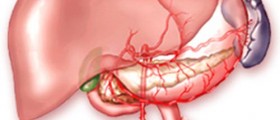
Causes
Many liver diseases can lead to end stage liver disease. This includes cirrhosis, viral hepatitis, metastasic cancer, obesity, autoimmune disorders and genetic disorders. Toxins and drugs can also causes liver failure through end stage liver disease. One major cause of liver disease in general is excess alcohol consumption. Alcohol abuse can lead to scarring and inflammation in the liver - this is known as cirrhosis.
Examination and Diagnosis
Treatment will of course be used to try to alleviate liver disease, but with chronic conditions, liver failure more often than not occurs. In order to diagnose end stage liver disease, a doctor must observe the status of the liver by using techniques such as CT scanning. Lab tests that measure the levels of certain enzymes and toxins will also be performed.
Treatment
Those who suffer from end stage liver disease will require a liver transplant as soon as is possible. Otherwise, their life will be in great danger and life expectancy will be low. Unfortunately, liver transplants are not possible for all patients. Even after transplantation, immunosuppressant medication must be taken for the rest of the patient’s life. This helps avoid rejection of the organ.
For those lucky enough to be eligible for a transplant, there are three types of transplantation methods. Heterotopic transplantation involves the introduction of a new liver from a donor. The patient’s own liver is kept in place, so there will in fact be two livers present in the patient. This approach is taken if there is a possibility of recovery in the patient’s original liver.
Orthotopic transplantation requires the replacement of the entire liver with a healthy liver from a deceased donor. A section of the vena cava will also be taken from the donor. The new liver and vena cava are implanted in the patient by connecting the vena cava, the portal vein, the bile ducts and the hepatic artery.
Reduced-size liver transplantation involves the introduction of a particular segment of a donated liver. The whole of the diseased original liver is removed, however. This choice allows one donated liver to be shared among several recipients. More often than not, this is the chosen method for infants and children.
- www.cdc.gov/nchs/fastats/liver-disease.htm
- medlineplus.gov/ency/article/000302.htm
- Photo courtesy of Olek Remesz by Wikimedia Commons: en.wikipedia.org/wiki/Lesser_omentum#/media/File:Lesser_omentum_EN.svg

















Your thoughts on this
Loading...